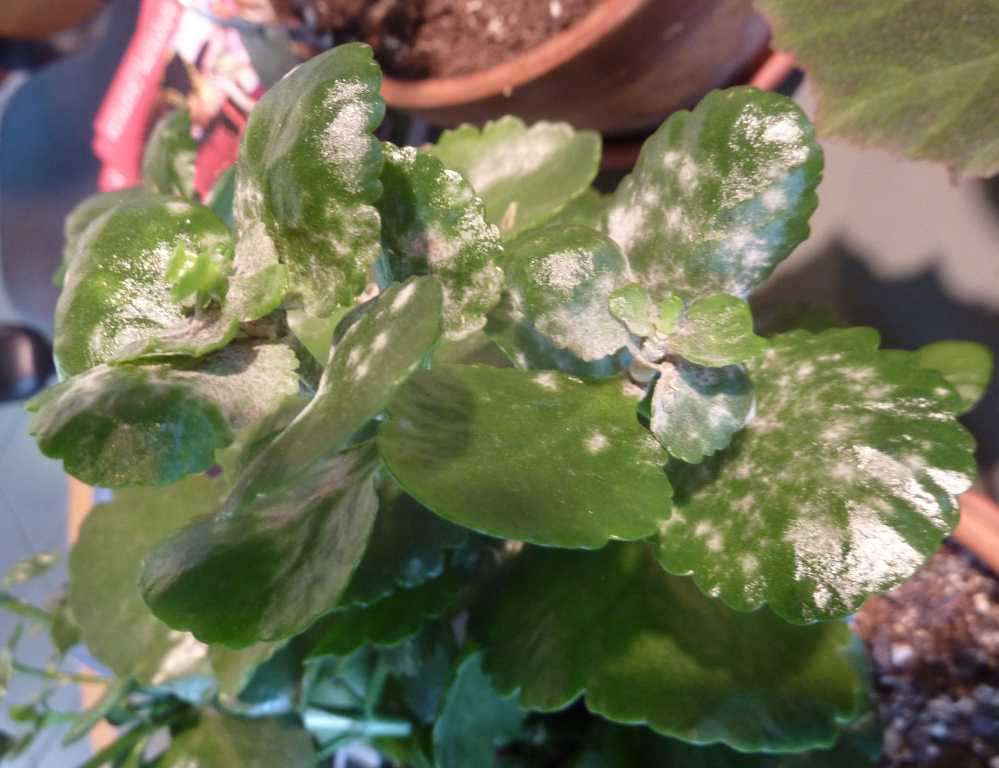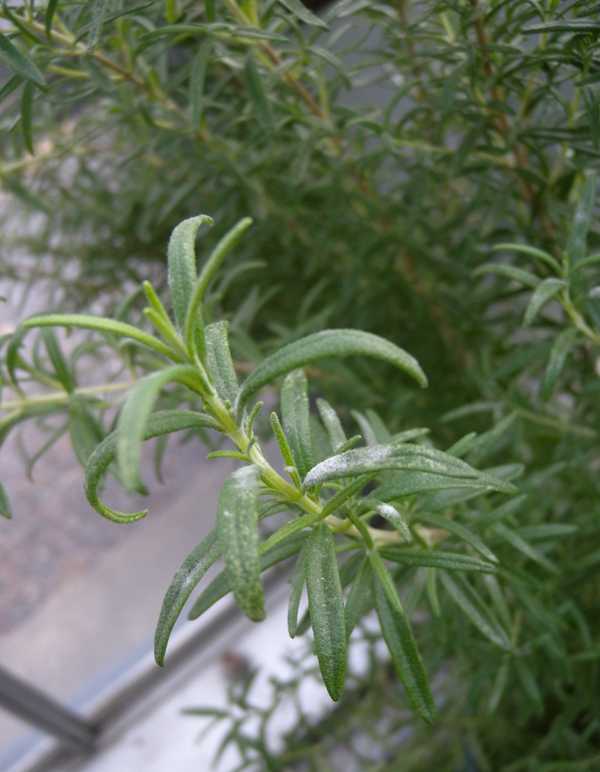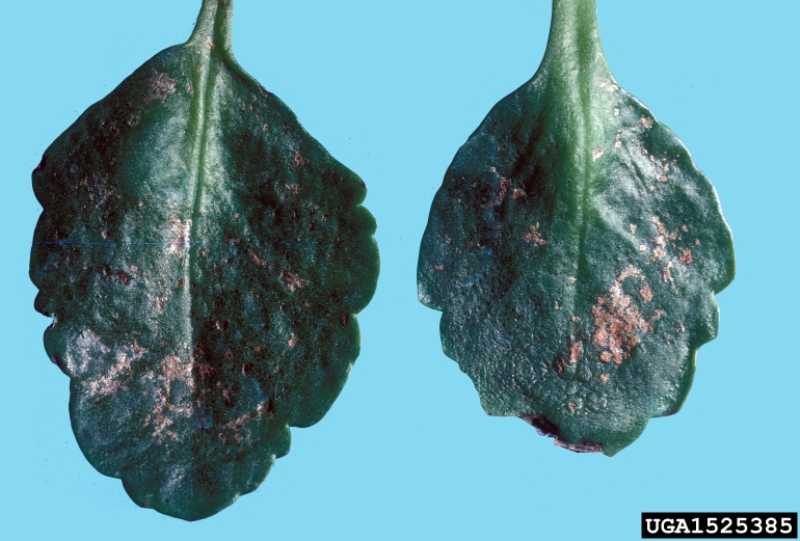 |
Powdery mildew on kalanchoe |
Powdery mildew is a common fungal disease of indoor plants. African violets, begonias, ivy, jade, kalanchoe, poinsettia and rosemary are susceptible to powdery mildew. It thrives best in cool, damp conditions.
Symptoms and Diagnosis
Powdery mildew starts as a dusty, white to gray, thread-like coating over leaf surfaces, stems, buds or flowers. It can be partially removed by rubbing the leaves but this will not eliminate the fungus.
Life Cycle
Powdery mildew is caused by many species of fungi each responsible for causing the disease on a limited number of plant species. That is, the species of fungi that causes powdery mildew on African violets is not the same species that causes powder mildew on rosemary. Therefore, powdery mildew on one plant may not spread to a dissimilar plant. Even given this, both plants may develop powdery mildew from different species of fungi if favorable conditions exist for disease development. Several species of powdery mildew can be common both indoors and out.
Powdery mildew starts as discrete, circular powdery white spots on leaves. It may also be on other above ground plant parts. The fungal mycelium grows and in time can cover large parts of the plant giving them a dusty, powdery, or silvery appearance. Powdery spores are produced that spread to other parts of the plant or related plants. The disease can develop and spread anytime the conditions for growth are favorable. Photosynthesis is impaired and growth may be stunted. Buds fail to mature. The plant declines in growth and vigor and eventually becomes unsightly.
Integrated Pest Management
1. Don’t ask for a problem. Choose healthy plants and purchase mildew resistant cultivars if possible.
2. Sanitation. At the first sign of infection, isolate the plant. Remove and dispose of all infected plant parts. Discard severely infected plants.
3. Evaluate and modify the growth environment. Keep plants in a well-ventilated area and do not overcrowd. Improve air circulation around plants. Avoid wetting leaves when watering, do not water from above.
4. Don’t over fertilize. Avoid high nitrogen fertilizers since powdery mildew attacks new succulent growth.
5. Treat with baking soda. Some gardeners recommend applying a baking soda solution to prevent the fungi from establishing. This changes the pH of the leaf surface. Test on a few leaves first as this may damage some plants. Some may feel this treatment may look as unsightly as the mildew disease itself.
6. Use a commercial fungicide. Valuable plants or crops may require the application of an appropriate fungicide labeled for indoor use, preferably one that is systemic. Be sure to read the label and follow directions.
Organic Strategies
Strategies 1, 2, 3 and 4 are strictly organic approaches.
More images
 |
Rosemary (Rosmarinus 'Barbeque') with powdery mildew
|
|

|
Powdery mildew on kalanchoe. Dept of Plant Pathology Archive, NCSU, Bugwood.org
|
|